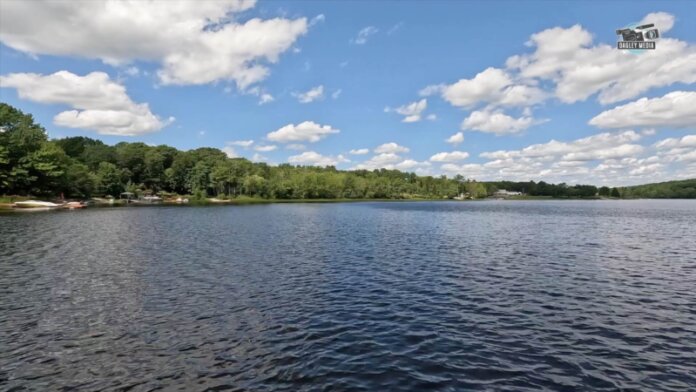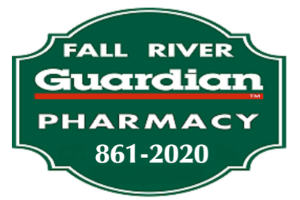
FALL RIVER: Some residents along Lake Thomas have a solution for the developer of a contentious project in Fall River that will see treated effluent put into the lake – go back to the original design.
The project, known as the Carr Farm Development to many in the community, would see upwards of 85 million litres of sewage dumped into the lake through pipes. Those outfall pipes are an estimated 200 metres from the park association’s water filtration system. wastewater from the planned on-site treatment facility being piped underground to the middle of Lake Thomas.
The 11 residents along the roadway get their drinking water from Lake Thomas so would be most impacted by the development and its plan to put the treated effluent into the lake.
Lindsey Hamilton-Swaine is one of those residents. She knows what would satisfy her on the issue.
“A satisfactory solution to me would be for them to go back to their original plan, where they could be self-sufficient and not impact the lake, members of this community, and any person who lives on the Shubie Canal or lakes connected to it.”
ADVERTISEMENT:
The original plan (approved March 2019) at Regional Council called for five buildings of three and four storey in height and up to 400 units on 46 acres of land on Fall River Road. (Link here – https://thelaker.ca/carr-farm-gets-green-light-despite-residents-push-back/ )
She said residents were shocked that homeowners on the lake weren’t contacted to see if they used it for drinking water. They only found out in late June that the Carr Farm project plan to get rid of their waste water into Lake Thomas.
“It seems that some thing very important was overlooked,” she said. “We were angry and very worried. My children drink this water as well as my elderly mother. How will one slip up influence our drinking water?”
Nova Scotia Environment and Climate Change said new treatment facilities, such as the one proposed for this project, do not require community consultation. The department ensures such systems meet provincial standards and regulations.
A community-led committee appealed the recent decision, but it fell flat at North West Community Council – https://thelaker.ca/residents-concerns-carr-farm-councillors-appeal-hearing/
ADVERTISEMENT:
Video of the approximate location for the outfall pipe as shot by Dagley Media for the community committee.
Hamilton-Swaine has concerns if the system fails what happens to those drinking the water and how will they be notified.
“How will we know it has failed before or after we drink the water?” she questioned. “Also with a long-term care home being there that means a lot of pharmaceutical waste that will come with this effluent water, and we have been told there is no regulation on pharmaceutical waste so that is also a big concern for all of us.
“How will this effect the ecosystem and the chain of lakes that are all connected?”
She was also concerned that according to HRM by-laws they are not allowed to dump effluent into a body of water where people drink from, so wondered how this got approved.
Councillor Cathy Deagle Gammon has been working hard to understand the impacts this will have on residents. At the appeal by the community committee she was the lone councillor to support the committee in their appeal.
ADVERTISEMENT:
She was asked with the concerns now coming forward from those 11 residents on Lake Thomas Drive how will those affect any further outcome from HRM.
“My understanding is that N.S. Environment and Climate Change has this jurisdiction, they approved the STP for the Carr Farm Development,” she said.
Deagle Gammon was asked if HRM could now determine to take a second look at the project with the concerns on the impact of the sewage from the treatment plant into the water that is residents drinking water.
“I believe this is still an unanswered question that needs to be answered by NSECC,” said Deagle Gammon. “If they deem there is an issue then they will inform HRM.”
She was asked when she heard about the impact this will have on those 11 residents and their drinking water, what her thoughts and reaction were.
“I wondered if NSECC was aware of the residents at Thomas Drive and if they were what consideration was given to make the determination to approve the STP,” she said. “If they were not – are they intending to revisit/review/revise the decision.
ADVERTISEMENT:
In an article with CBC. N.S. Ron Pachal, with Vision 7 Developments, said the planned treatment facility will be computer monitored and equipped with redundancies to protect against failure.
“We looked at wastewater plants throughout Canada, the U.S., Europe,” Pachal said. “People should just have comfort in that system that we’re putting in.”
When asked how that comment made Hamilton-Swaine and others feel, she said there is no comfort in knowing that at anytime one mistake can lead to life-long illness.
“We put our confidence in the sewage treatment plant for the Halifax Harbour and look what happened,” said Hamilton-Swaine. “Errors do occur, and it took years to clean that up.”
Pachal further explained about the treatment facility in a July 12 interview with The Laker News.
He said the plant is fully enclosed and will have a biological odor scrubber to ensure that there will be no negative odors. Being fully enclosed, noise will also not be an issue, he said.
“As to regards to questions of reliability, every piece of mechanical equipment is supplied in duplex, providing a fully redundant system,” said Pachal. “The equalisation tanks were designed with excess capacity, that should an operating issue arise there is more than adequate storage capacity until the issue is fixed.
“The SCADA system used in the treatment plant is state of the art and includes monitoring, alarming and diagnostic functions that ensure the plant operates properly and safely while also providing immediate notification of any potential operational issue.”
ADVERTISEMENT:
Pachal said the operation and monitoring of the plant are also closely monitored by the NSECC and Climate Change. A sewage treatment plant must have a certified operator and NSECC has requirements for regular reporting.
“Our certified operator has to make sure the system is operating the way it was designed and approved by NSECC and does regular reports to NSECC to make sure that the outflow from the plant is within acceptable parameters and operating within what the NSECC permit allows for that type of system,” he said.
Hamilton-Swaine said she is well aware there is a housing shortage in HRM but is also not naive to the fact that the cost that people will be paying for these units will be far from affordable for the average senior citizen.
“I’m for a long-term care home here in Fall River and retirement area but they have morphed this project beyond its limits,” she said. “The original plan their sewage could be treated on their property with out effecting the lake or anyone around it.”
ADVERTISEMENT:
Thomas Swaine, who looks after the park’s water filtration system, is one of those upset at the proposed plan as well. Swaine is Hamilton-Swaine’s father-in-law.
“I don’t think they realized there were aware residents used the water for drinking water. Now they are saying the sciences say it’s safe,” he said. “Nobody is going to want to drink that water with sewage being dumped into it.”
Swaine said more information on the development has come out since it’s been approved.
“They said it’s something that the public didn’t have to know,” said Swaine.
Pachal said the environment is a top concern for the developer and why they have gone to great lengths.
“From putting together the specialized team, selecting the best treatment plant, its fabrication, installation, commissioning, permitting, operating, and monitoring,” he said, “the protection of the environment has been and always will be a priority for the project. “






















